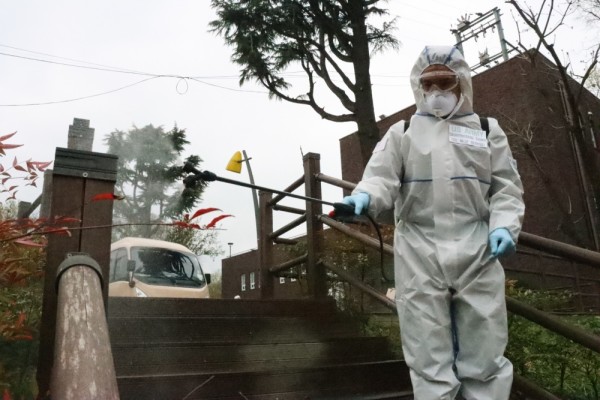

WASHINGTON (Reuters) – As U.S. spy agencies seek to assemble a precise picture of the world’s coronavirus outbreaks, they are finding serious gaps in their ability to assess the situation in China, Russia and North Korea, according to five U.S. government sources familiar with the intelligence reporting.
The agencies also have limited insight into the full impact of the pandemic in Iran, although information on infections and deaths among the ruling class and public is becoming more available on official and social media, two sources said.
The four countries are known by U.S. spy agencies as “hard targets” because of the heavy state controls on information and the difficulty, even in normal times, of collecting intelligence from within their closed leadership circles.
An accurate assessment of those countries’ outbreaks would aid U.S. and international efforts to limit the human and economic tolls from COVID-19, the disease caused by the coronavirus, experts say.
The agencies are not just looking for accurate numbers, but also for any signs of the political ramifications of how the crisis is being handled.

“We want to have as close an accurate, real-time understanding of where the global hotspots are and where they are evolving,” said Jeremy Konyndyk, an expert at the Center for Global Development thinktank, who led the Office of U.S. Foreign Disaster Assistance from 2013 to 2017, including the U.S. response to the Ebola outbreak. “The world is not going to get rid of this thing until we get rid of it everywhere.”
U.S. intelligence agencies first began reporting on the coronavirus in January and provided early warnings to lawmakers on the outbreak in China, where it originated in the city of Wuhan late last year, said the sources, who asked not to be named in order to speak freely about intelligence matters.
The pandemic has grown to nearly 740,000 cases in some 200 countries and territories, Reuters figures show, with the United States now reporting the most cases at more than 152,000.
The Office of the Director of National Intelligence, which oversees the 17 U.S. intelligence agencies, declined to comment.
NOT ONE CASE
North Korea claims to have not had a single case even though it borders China, but has asked international aid agencies for supplies like masks and testing kits.
One U.S. source said, “we don’t know” anything about the scale of the problem in the hermetic country.
“It’s a nuclear-armed country where things that could destabilize the government would be of great interest to the United States,” said Konyndyk, who also led the U.S. response to the humanitarian crisis in Syria.

Russian authorities are considering a nationwide lockdown after recording the biggest one-day rise in coronavirus cases for the sixth day in a row, for a total of 1,836 cases and nine deaths.
Knowing the full extent of Russia’s coronavirus spread could be critical as it shares borders with 14 other countries and is a hub of trade and travel.
U.S. Secretary of State Mike Pompeo alluded last week to the dearth of accurate information on Russia and Iran, and accused China of a disinformation campaign, which Beijing denies.
China, which has reported more than 81,000 cases and more than 3,300 deaths, says no new cases are originating at home. It remains wary of travelers returning from abroad.
The U.S. view of the Chinese claim of no new domestic cases is that “some of it may be true,” according to one source. U.S. agencies remain skeptical that the Chinese have the virus under control, the source said.
Konyndyk said while Beijing concealed the severity of the initial outbreak, it does not appear to be doctoring numbers now, however.
China “seems to be the most successful country in terms of taking very large-scale growth and rapidly extinguishing it,” he said. “If their case numbers are real, it’s really important to understand their approach and adapt it.”
(Editing by Mary Milliken and Sonya Hepinstall)